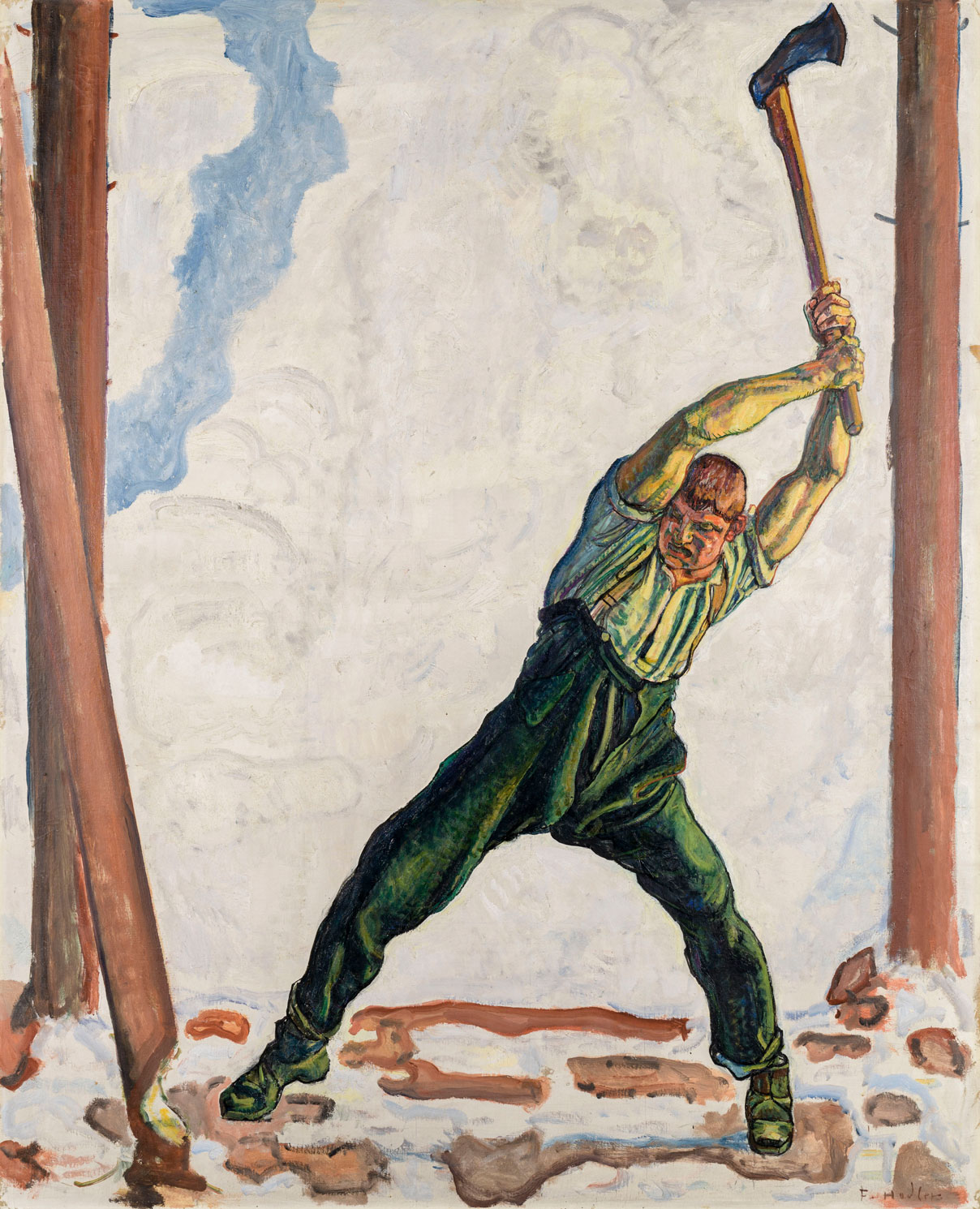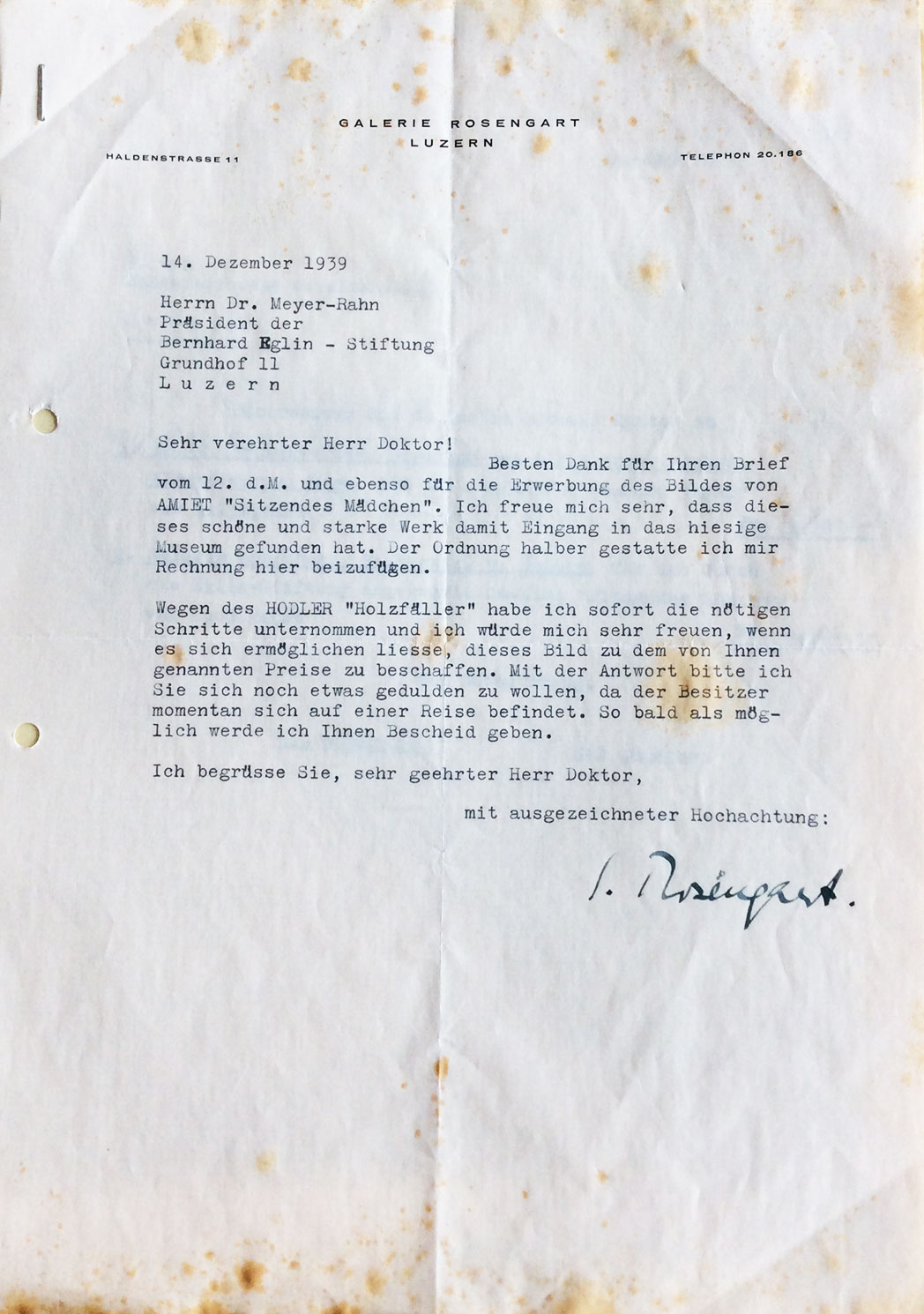Provenance
Mr. “Woodcutter”, where are you from?
Provenance research traces the ownership of works of art and clarifies, for example, if it is looted art.
Origin
As with people, we also want to know where artworks come from. Whom did the work belong to, and why was it sold? Did this happen for particular reasons? The history of the work is then dealt with by provenance research. The Kunstmuseum Luzern has thoroughly studied the →provenance of its Woodcutter. Thanks to the support of the Federal Office of Culture, its origins could be examined precisely.
the Sale
The preserved correspondence indicates that the Bernhard Eglin Stiftung bought the painting from the Jewish collector-couple in Frankfurt am Main, Martin and Florence Flersheim, in 1940. The negotiator, the Luzern gallery owner Siegfried Rosengart, reduced the selling price from CHF 12’000 to CHF 8’250; his commission was CHF 250. By comparison: Ferdinand Hodler sold a Woodcutter for CHF 15’000 in 1910. As a private institution, the Rosengart Collection is not obliged to make its archives accessible, so for this reason some of the details of the sale are still in the dark.


Looted Art
Several years ago, after a report of loss on the private online platform Lost Art, suspicion arose that the Lucerne Woodcutter could be →looted art and should be restituted to the heirs (→restitution). The Kunstmuseum Luzern can clearly account for the fact that the painting has been in its collection since its purchase in 1940. At no point was the work lost. So what had happened?
Flight Asset
At the time of the sale, Florence Flersheim and her son Fritz were in Amsterdam; they had fled there from the National Socialists. Because the negotiation of the sale was to take place before the Germans invaded the Netherlands, and because the sale was to be carried out in the name of the owner, Florence Flersheim, the Lucerne Woodcutter is to be regarded as →flight asset. The heirs therefore have no legal entitlement to restitution of the painting. The term Flight Asset is specific to Switzerland and corresponds to the provisions of the Washington Conference of 1998. When the war ended, Fritz Flersheim initiated restitution procedures regarding items from his parent’s art collection. Ferdinand Hodler’s Woodcutter was not included on the list of missing objects. Did the heir know that the Woodcuter could not be restituted given the legal situation at the time?
Lexikon der Provenienzforschung
Flight Assets
Works of art sold by their owners in keeping with the prevailing law and of their own accord when fleeing persecution. The term is used mainly in Switzerland, and distinguishes that art from looted art. It is a controversial concept, given that a sale can also be forced by pressure from a third party, for example.
Provenance
(Lat. provenire, “to come from”). The provenance constitutes a kind of pedigree, or family tree, for an artwork and lists its owners. Provenance research accounts for the property situation of the respective objects as precisely as possible so as to establish whether the object was stolen at any time.
Looted Art
Illegally seized cultural artefacts. Used in the German-speaking territories mainly in the context of National Socialism, and in more recent times also in connection with colonialism. If an object is declared to be looted art, restitution or an appropriate compensation must be sought for the heirs.
Restitution
(Lat. restitutio, “restoration”). Compensation or reimbursement for damage incurred. In the field of art, restitution means the return of, or financial compensation for seized artworks. Victims can make a court claim for restitution. Often the affected art institutions strive to reach a joint solution with the descendants of the owners and thus preserve the work for their own collection. The problematic situation can be illustrated, for example, by making the provenance clearly visible in the exhibition.